In the energy sector, digital transformation is no longer a future plan — it is a requirement for today’s competitive landscape. Insights gathered from 85 senior executives across 43 energy companies point to three clear investment priorities:
Decarbonization, Efficiency, and Operational Digitalization.
These three pillars define not only technology investments but also the sector’s future growth areas.
-- Research Methodology: An Objective Data Collection Process --
As part of our PitStop event series, we conducted a comprehensive analysis of technology preferences among 85 corporate professionals from 43 different energy based organizations. To ensure unbiased results, we employed an objective presentation method and collected independent evaluations from all participants.
Priorities: Investment Strategy in Three Main Axes
The data reveals that energy players are concentrating their investments around three main axes:
- Decarbonization → Carbon emissions management, sustainability solutions, green hydrogen.
- Efficiency → Energy and operational efficiency, industrial water management.
- Operational Digitalization → Task/work management, autonomous artificial intelligence applications.
In line with global analyses, the first step toward achieving net-zero targets is energy efficiency, supported by digital and AI solutions that enable measurement, optimization, and automation.
Top 10 Most Demanded Areas:
- 47% – Carbon Emissions Management
- 42% – Energy Efficiency
- 40% – Sustainability Management
- 33% – Air Quality Monitoring & Climate Control
- 33% – Green Hydrogen Production Systems
- 28% – Industrial Water Management & Efficiency
- 26% – Generative Artificial Intelligence
- 26% – E-Waste Conversion
- 23% – Business & Task Management
- 23% – Energy Management & Savings Solutions
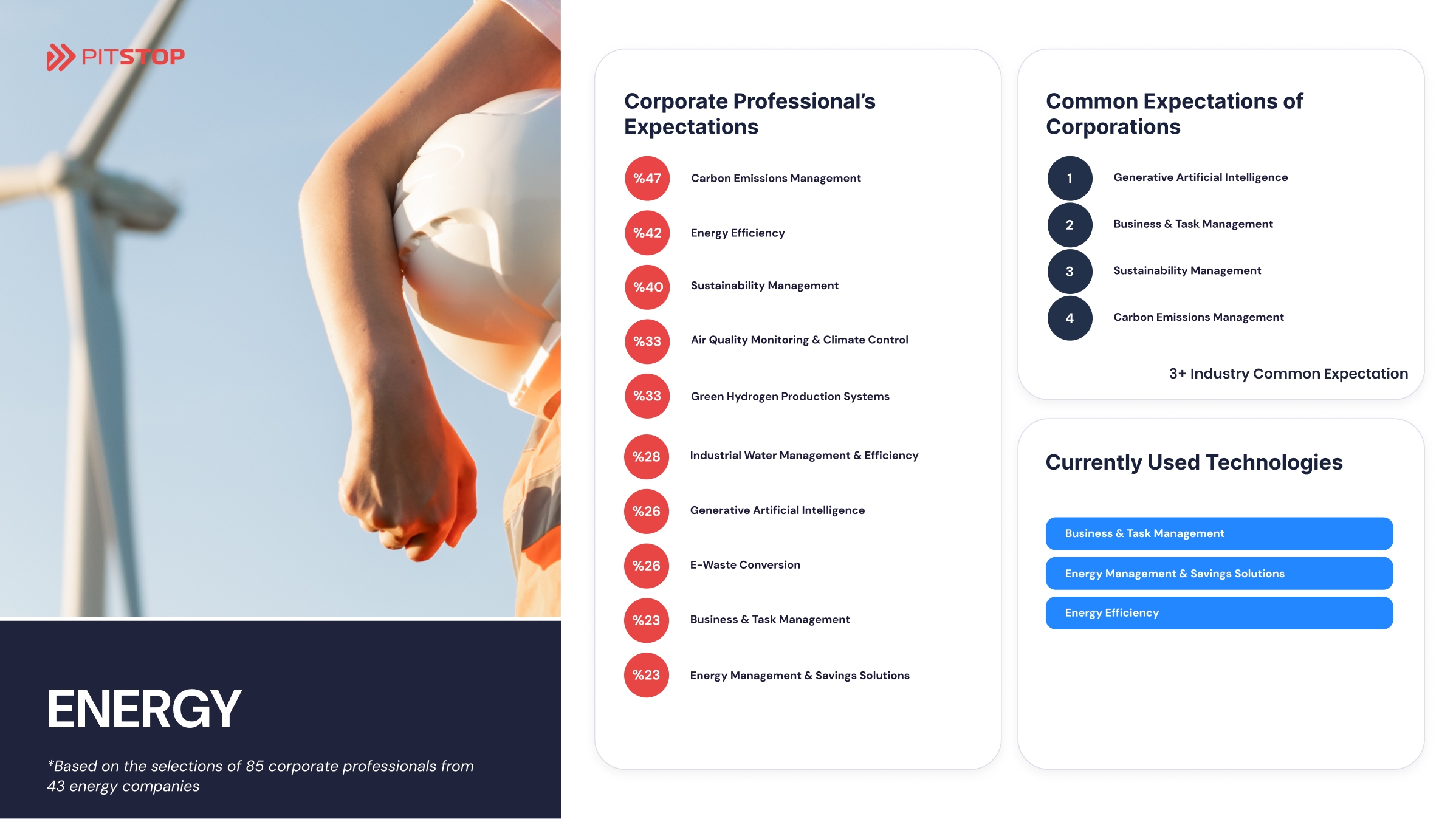
Multi-Sector Common Expectations
The key solution areas emerging in the energy sector reflect not only today’s trends but also the investment roadmap for the next five years:
- Generative Artificial Intelligence
- Business & Task Management
- Sustainability Management
- Carbon Emissions Management
For technology providers, these areas represent critical “first steps” in product development and market positioning strategies.
Current Usage: A Snapshot of the Transformation
The digital solutions most widely adopted by energy companies today include:
- Business & Task Management
- Energy Management & Savings Solutions
- Energy Efficiency
This distribution indicates that companies are primarily investing in solutions that reduce operational risks and deliver quick returns. However, carbon management, renewable energy integration, and integrated sustainability solutions remain significant growth opportunities.
Strategic Roadmap: Integrated Solutions for Leadership
Leadership in the energy sector will not come from investing in technology alone, but from transforming it into integrated management models. Companies that combine carbon measurement, efficiency strategies, task management, and autonomous production systems within an end-to-end digital architecture will not only follow the market but shape it.
Explore More Industry Analyses >>







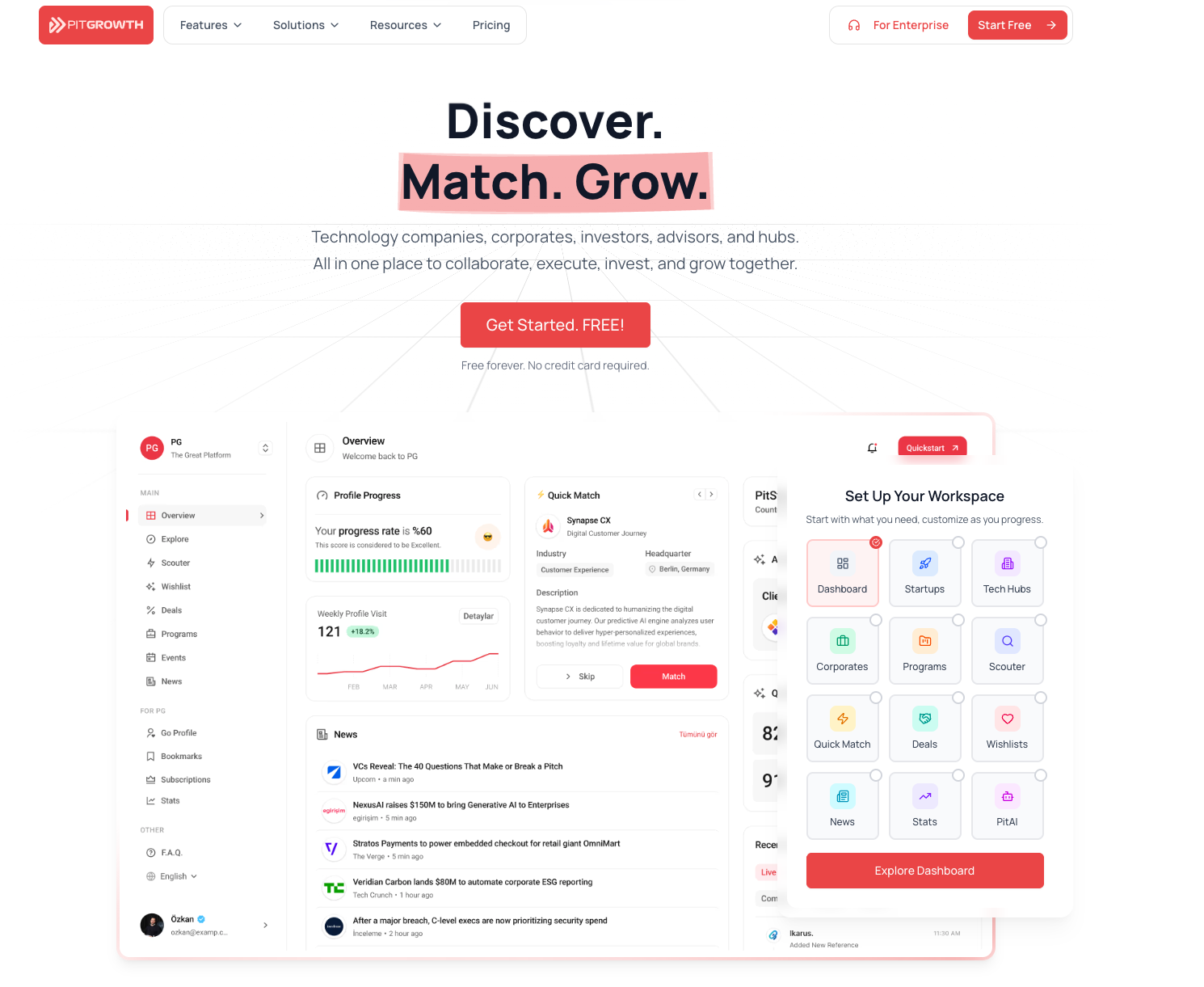
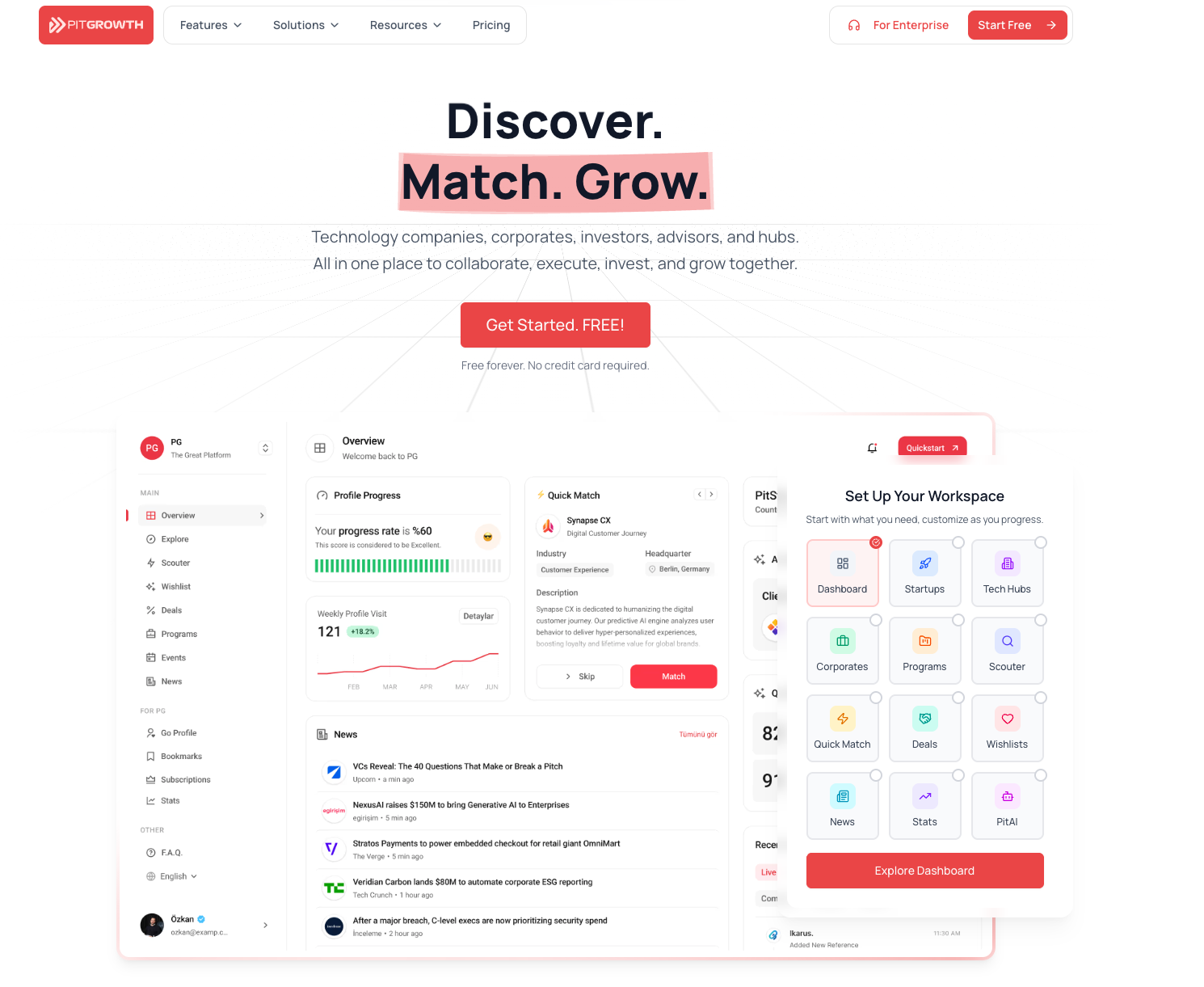

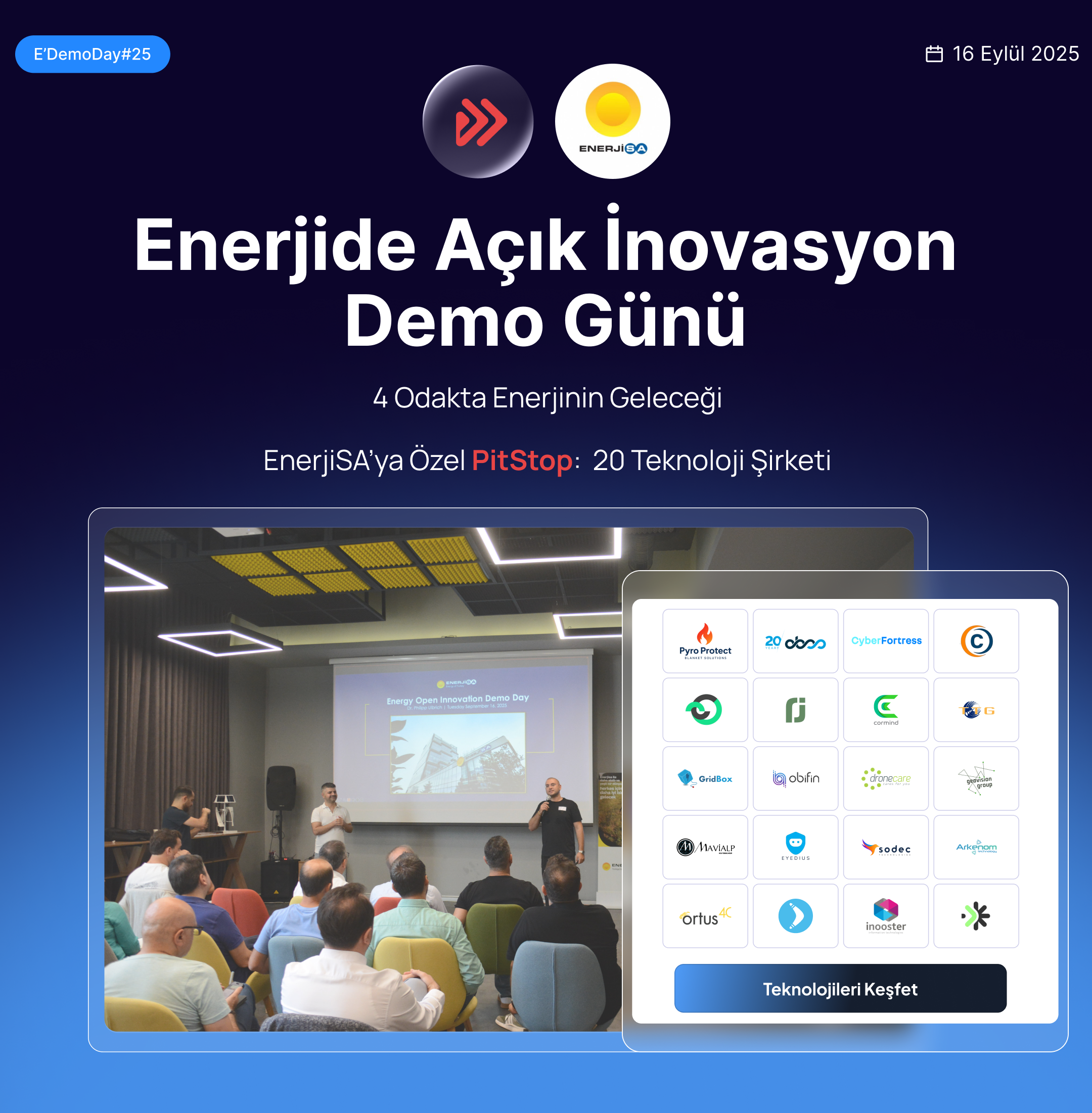
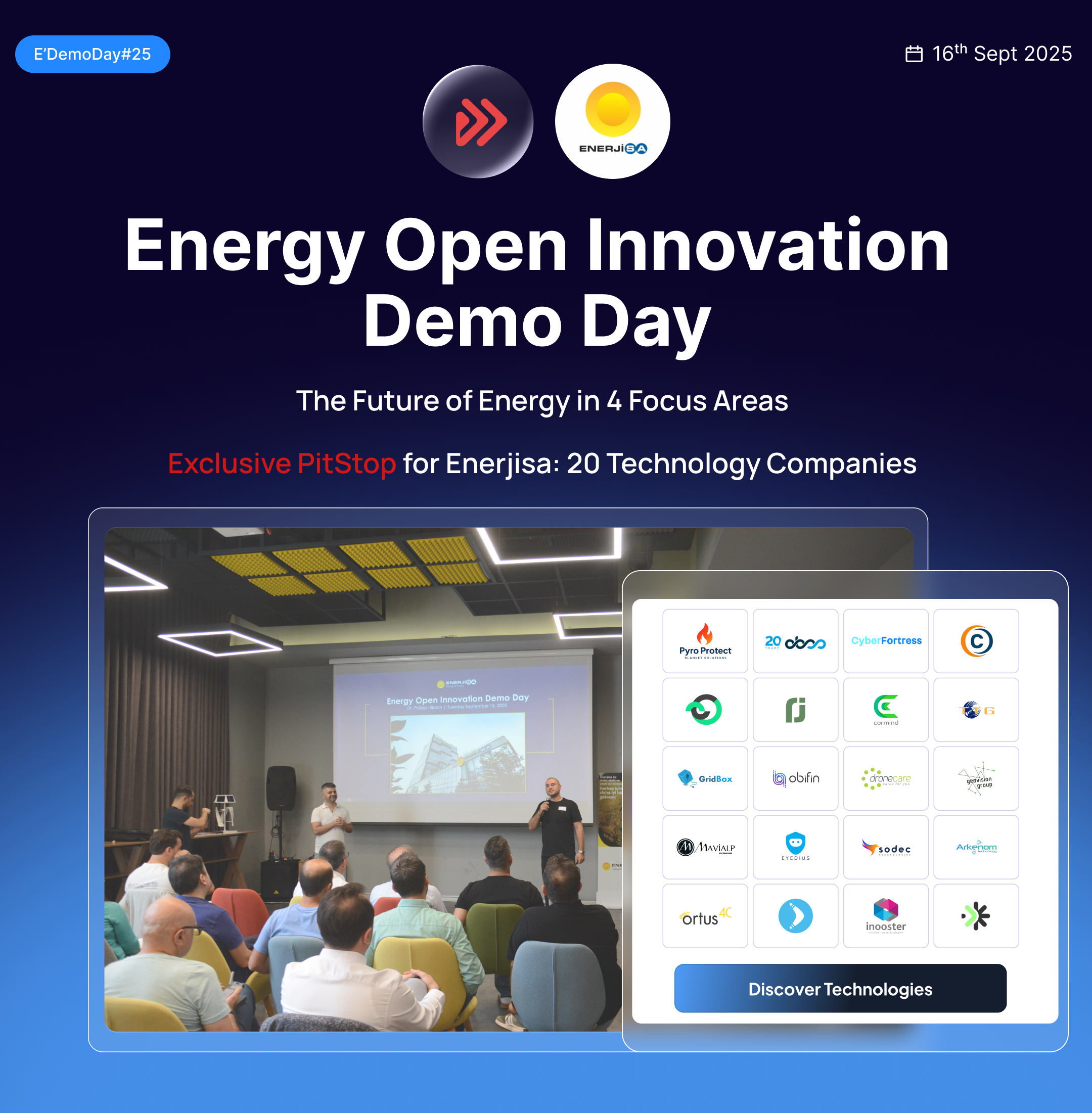
Discussion